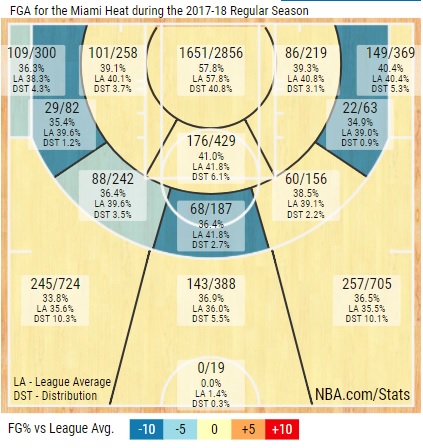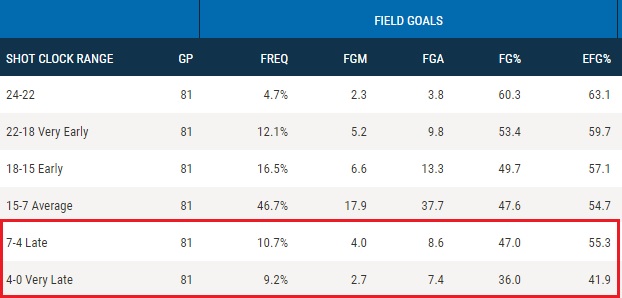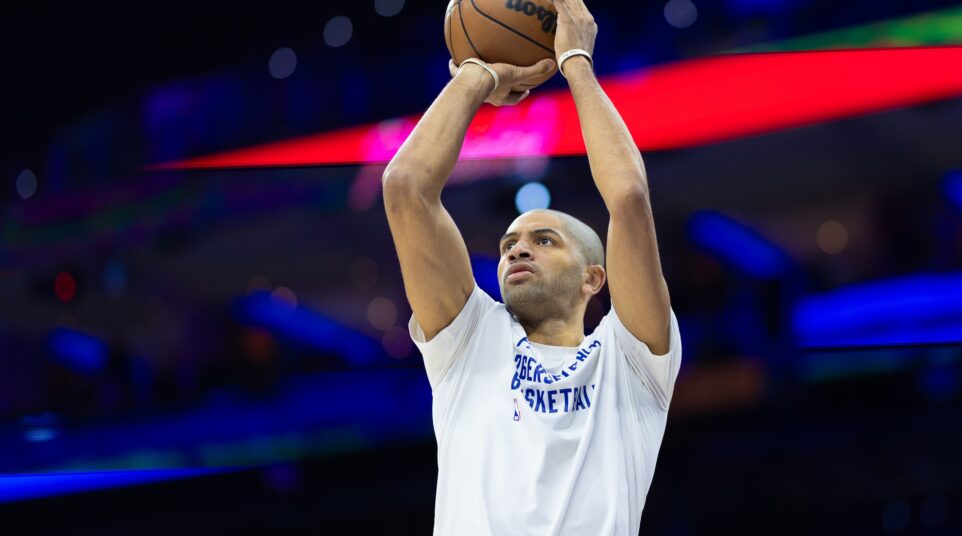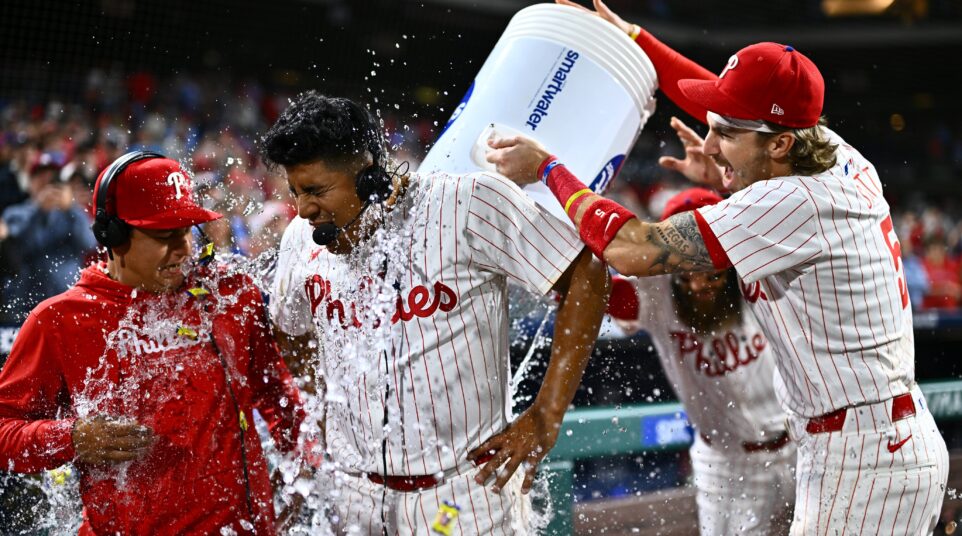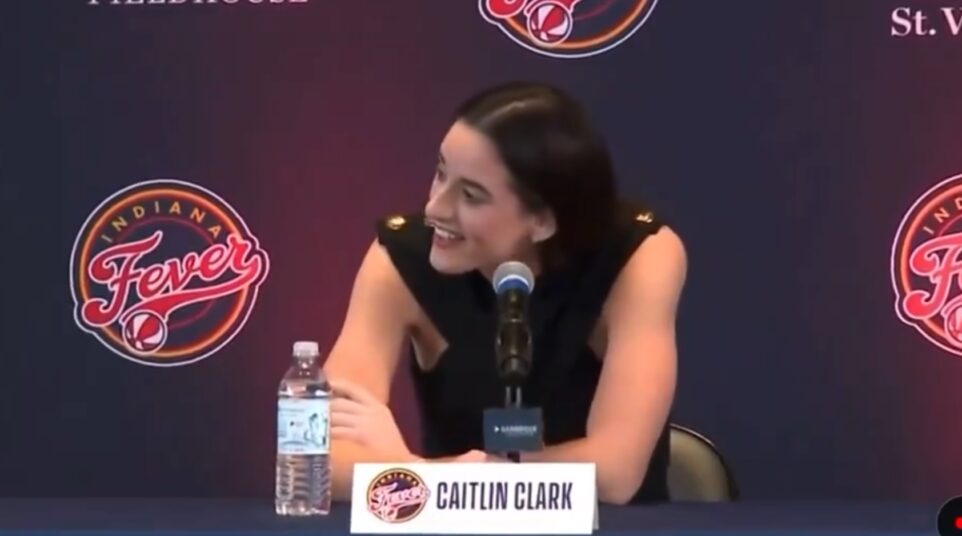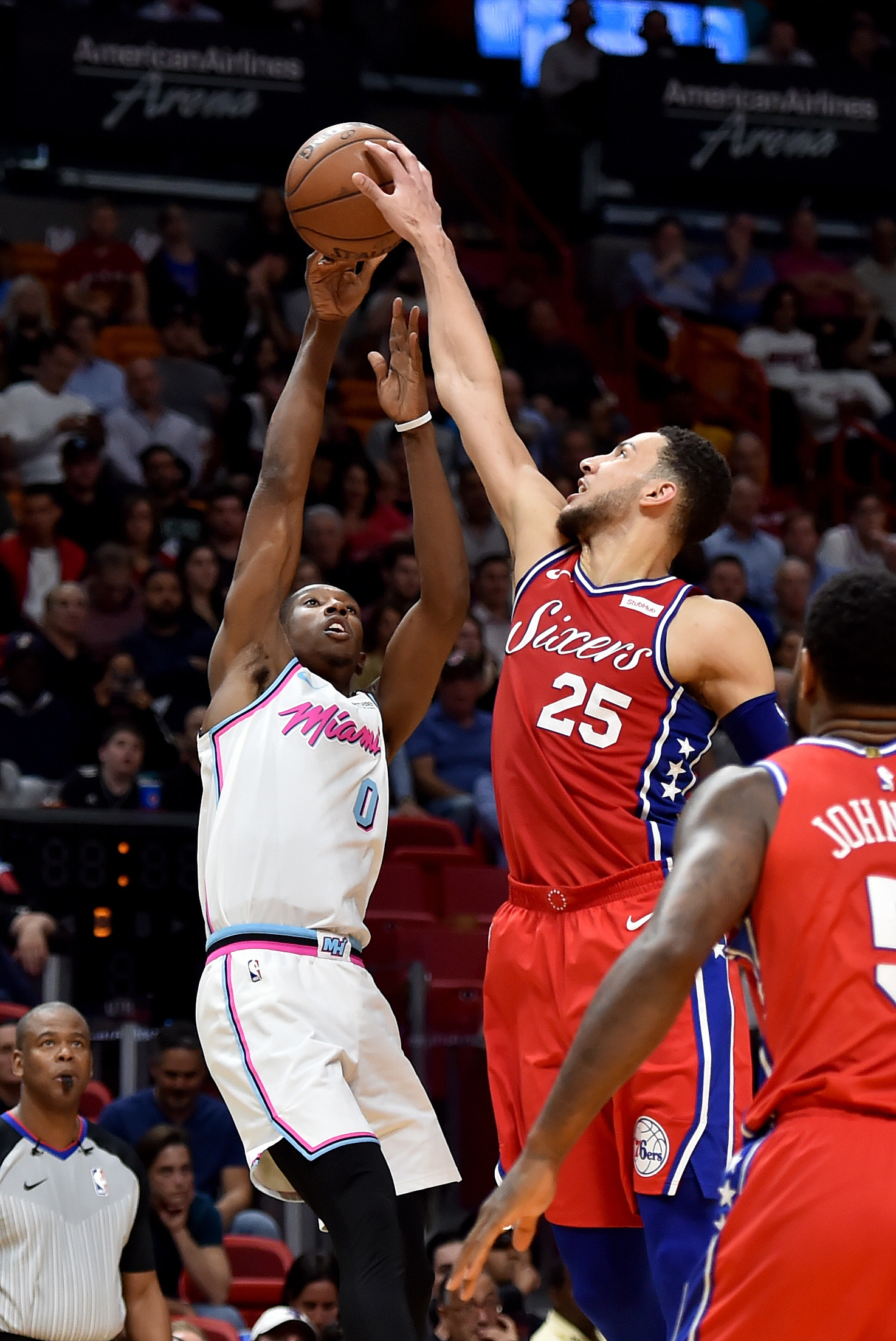
Previewing the Sixers and Heat, Part One: The Numbers
Let’s preview the Sixers/Heat series in two parts.
I think we can dive into the film from the regular season series tomorrow afternoon, so we’ll start with a broader look at the Heat and what to expect on Saturday night.
My general thought is that they’re a well-coached team that doesn’t have a standout superstar, but they play above-average defense and don’t give up a lot of cheap buckets or easy looks.
We can test out that theory on paper by looking at Miami’s regular season numbers and how they rank league-wide:
- points per game: 103.4 (23rd)
- field goal percentage: 45.5 (17th)
- field goal attempts per game: 85.3 (23rd)
- three-point percentage: 36 (16th)
- three-point attempts per game: 30.6 (9th)
- free throw percentage: 75.5 (22nd)
- rebounds per game: 43.5 (18th)
- offensive rebounds per game: 9.3 (21st)
- assists per game: 22.7 (17th)
- turnovers: 14.4 per game (16th best in NBA, right in the middle)
- steals per game: 7.6 (21st)
- blocks per game: 5.3 (6th)
- personal fouls: 20.1 (20th)
- fouls drawn: 19.1 (21st)
- plus/minus: 0.5 (16th)
Anything jump out at you?
Not really. They’re middle to bottom-half in most offensive categories, plus rebounding and assists. Miami shoots the three ball with top-ten frequency, but only hits at the league’s 16th best percentage, so there’s a bit of inefficiency there.
The block numbers stand out thanks to Hassan Whiteside, who averages 1.7 per game. He missed nine games in March with a hip flexor injury, then returned on the 29th to put up 15 blocks in the seven final games of the regular season. Between Whiteside and Bam Adebayo, they do have good rim protection.
Let’s take a look at the advanced stats:
- offensive rating: 104.5 (20th)
- defensive rating: 104 (7th)
- assist to turnover ratio: 1.58 (19th)
- defensive rebound percentage: 79 (6th)
- effective field goal percentage: 52 (14th)
- true shooting percentage: 55.1 (16th)
- PACE: 97.76 (26th)
- points off turnovers: 16.4 per game (15th)
- second chance points: 11.3 (24th)
- fast break points: 9.3 (27th)
- points in the paint: 44.9 (12th)
- opponent points off turnovers: 15.6 (11th)
- opponent second chance points: 11.7 (9th)
- opponent fast break points: 10.9 (7th)
- opponent points in the paint: 43.5 (9th)
Again, nothing Earth-shattering here. They are an average to below-average offensive team that shoots the ball in the middle of the NBA pack. They play a slower and more deliberate game, don’t threaten in transition, and don’t get a ton of points off turnovers or offensive rebounds.
What they do well is play solid defense and limit mistakes. They’ve got a top-ten defensive rating and if you look at those last four bullet points there, you see they don’t give up much off turnovers, second chance efforts, fast breaks, or interior looks. They are top ten in three of those four categories, and buckets that come easy for the Sixers against lesser teams are a bit harder to pull off against Miami. You do have to work for your points, and I think that’s why all four games with the Heat were a slugfest this season.
Some more defensive numbers:
- opponent field goal percentage: 45 (7th)
- opponent three-point percentage: 36 (13th)
- opponent free-throw attempts per game: 23 (22nd)
- opponent offensive rebounds: 9.1 (6th)
- opponent assists: 21 (3rd)
- opponent turnovers: 14.1 (18th)
Same story.
Good field goal defense, decent perimeter defense, and the limitation of second chance points via offensive rebounding. Miami doesn’t really turn you over, and they do send you to the foul line frequently, but I think the theme is the same, the idea that they make each possession a bit harder than your average NBA squad.
Here’s how they score their points:
- % of points from 2PT field goals: 53.8 (19th)
- % of points from midrange 2PT field goals: 10.4 (23rd)
- % of points from 3PT field goals: 31.9 (8th)
- % of points from fast breaks: 9.0 (26th)
- % of points from free throws: 14.3 (25th)
- % of points off turnovers: 15.9 (10th)
- % of points in the paint: 43.4 (12th)
- % of assisted 2PT field goals: 45.7 (28th)
- % of assisted 3PT field goals: 90.8 (2nd)
They score in the paint and from the three point line and they don’t try a ton of low-percentage mid-range stuff. Again, that’s good coaching.
Here’s their shot chart in two different formats, starting with frequency of shots:
They hit in the paint and from the right side of the three-point arc, specifically. For whatever reason, they don’t shoot as well on the left side.
Here’s a more specific breakdown:
They’re right in the middle of the pack, not a huge +/- change compared to most league averages. The only place they really drop off is in the area of long-twos, which is want you don’t want to be taking anyway.
Those last two bullet points jump at me, the fact that Miami is #28 in assisted two-pointers yet #2 in assisted three-pointers this season. That means what? Patience. It means showing smarts in the half court. It means good perimeter ball movement, making the extra pass and finding the open man.
Guess who’s #1 in assisted three-point percentage this year?
Yea, it’s the Sixers, at 95.4%. Philly is an excellent ball moving team and throws a ton of passes. Miami isn’t built exactly the same, but they show a lot of savvy on most possessions.
Here’s a typical late shot clock three pointer:
They look for Dwyane Wade, no shot, so he goes back inside to Adebayo. Shot clock hits 6, he kicks it back out to Kelly Olynyk for the three. You see a lot of that from the Heat, composure in the half court that might, admittedly, have something to do with an inability to create a ton of open looks otherwise.
Brett Brown touched on that Thursday afternoon:
“There is some offensive firepower with their personnel in relation to playing downhill. When we look at the teams that have hurt us, they have things that hurt us. Their notion of being able to play longer in a 24 second shot clock – they’re not reliant on a one or a two pass thing. They’re happy to go side to side and play until they get something they like. They still look at early offense in transition but it’s really, if they don’t get something quick, they’re happy to play basketball in a half court environment, which is very playoff-driven. They’re purposeful with what they do in a half court offense.”
You see they shoot the ball pretty well in the later stages of possessions, not with the shot clock expiring necessarily, but in that 7 to 4 range, which you saw in the clip above:
This team has some athletes, but there’s no Giannis, no DeRozan, no Lillard, no truly elite scorer. Goran Dragic, who missed last night’s season finale with a knee issue, is the team’s leading scorer at 17.3 PPG. They’ve got six guys in that 10 to 12 PPG range and they sort of spread it around evenly. Wade is the X-factor, the guy who will probably turn back the clock at some point in this series and go off for 20 points, but he’s obviously not the player he used to be.
I think that’s Miami in a nut shell, a solid, well-coached team that doesn’t have a ton of oomph, but they play good defense and don’t really give you a lot of easy stuff.
Brown agreed with that assessment:
“I think when you go deeper and you combine analytics into what you just said, they’re just well-coached. You know, it’s a program that has experienced a lot, you look at what they do with, pick (an area), like shooting corner threes and defending corner threes, or to your point of those other successful and accurate statements you make about (transition defense and limiting second chance points), with the solid side that you’re referring to, just look at the body of work over the years. Think of what (Erik Spoelstra) has been through. Think of what (Pat Riley) has been through. Go speak to Gregg Popovich or (Spurs assistants Ime Udoka and or Ettore Messina), it’s like they have a history, a culture of winning. Imagine the lessons that would have been learned over all those periods of time in game sevens and so on, that now make them a little bit better than they used to be, for this quarterfinal series. It’s a solid program. I have a tremendous amount of respect for the program.”
It’s all true.
From a macro standpoint, this team went 12-9 to finish the season, compiling a 26-15 home record and 18-23 road record overall. They went 14-10 post-All Star break and actually improved their offensive output by 10 points on average in those 28 games, compared to the first 58.
The defensive rating improves from 104.4 to 103 post-All Star break, but the offensive rating jump is actually more significant, from 103.1 to 107.7. I’d think that’s probably the D Wade effect there.
So I think that’s a good look at Miami from a larger viewpoint. We’ll take a look at the four matchups between the teams and focus on some more micro things tomorrow.



